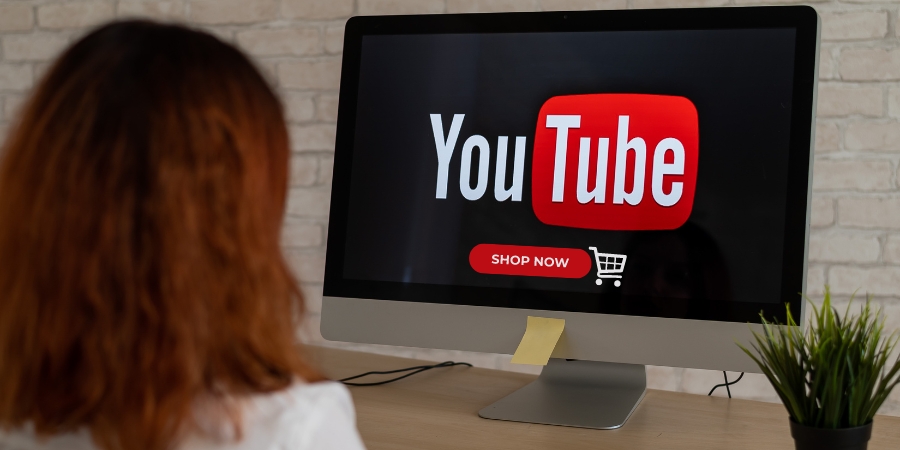
Photo: Canva
Fashion site Glossy shares how YouTube is pushing forward with video shopping in the wake of Instagram reducing its shopping features and TikTok increasing theirs with a new Shopping Center.
On June 14, according to Glossy, “YouTube announced the official launch of its affiliate program for any creator with 20,000 subscribers or more.” The head of shopping content partnerships at YouTube, Bridget Dolan, said that the program’s beta tests have been “going really well” since the end of last year with retailers like Ulta Beauty and Sephora. The platform has also been promoting its “Shoppable Shorts” feature, which launched last November and has already been adopted by brands like Glossier and Fenty Beauty.
This new program capitalizes on influencer monetization features that have been unveiled over the past year. The question on everyone’s mind: How will YouTube succeed where Meta failed?
As reported by TechCrunch, Meta shut down livestream capabilities on Instagram and Facebook as of March 2023. Meta’s efforts are now concentrated on advertising and “the use of its automated tools like Shop ads and Advantage+ shopping campaigns aimed at helping improve ad performance.” TechCrunch also notes that the company plans to continue investing in checkout, “where people can buy a product in just a few taps from Instagram and Facebook Stories, Feed or Reels.”
Allowing content creators to sell directly to their audiences is nothing new, but YouTube aims to make it as seamless and frictionless as possible.
The general method video creators have always used to promote products involves asking their viewers to use affiliate links in the video’s description. However, this method often led to problems, such as “products being out of stock or viewers finding it cumbersome to navigate away from the video to access the desired information,” according to Glossy.
In order to overcome these challenges, “YouTube’s revamped affiliate program introduces a ‘view products’ button that allows viewers to access a panel within the video itself. This panel displays product images, prices and retailers where they can be purchased, eliminating the need for viewers to leave the video and search elsewhere.”
YouTube is also partnering with Shopify, according to TechCrunch, so that creators and merchants alike can feature products on their channels. “With this partnership, creators who link their stores can display their products across their channel and leverage Shopify’s real-time inventory syncing. Creators in the United States can now enable onsite checkout to allow viewers to complete their purchases without leaving YouTube.”
ZDNET adds that “creators connected with Shopify or Google Merchant Center can set up YouTube Product Drops from YouTube’s Live Control Room.”
The final aspect of the new formula allows creators to “schedule their product release within YouTube Studio and control the date and time a product goes live. So, creators can keep their product drop a secret and manufacture anticipation around a new product,” according to ZDNET.
Live shopping is currently thriving in China, where viewers watch their favorite influencers model and showcase products. It’s a phenomenon that takes the concept of yesteryear’s broadcast of QVC television to the masses. Users are participating in China’s social media apps with the ability to buy directly from their apps live, while in the U.S., social platforms require users to leave the livestream and redirect them to another webpage to make purchases.
For example, the New York Times reports how star streamers in China have become celebrities. “The most famous, including Li Jiaqi — whose prowess at trying on and pitching makeup products earned him the nickname ‘lipstick king’ — are able to attract tens of millions of viewers per session.” Additionally, “Kim Kardashian once appeared with another top Chinese streamer, Viya, to promote her perfume in China, selling 15,000 bottles within minutes.”
Only time will tell if YouTube Shopping in the U.S. will be able to take off in the same way.


Leave a Reply
You must be logged in to post a comment.